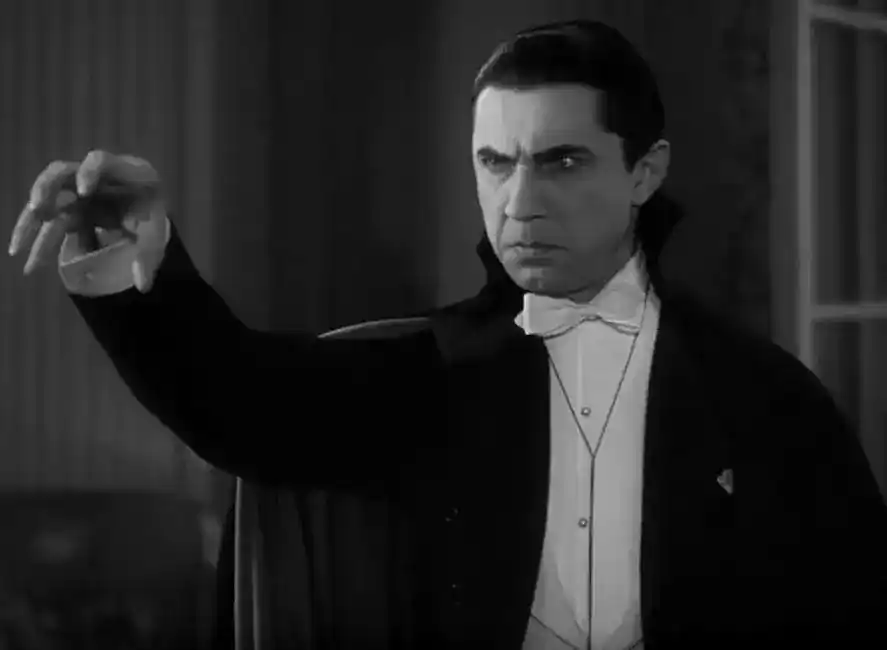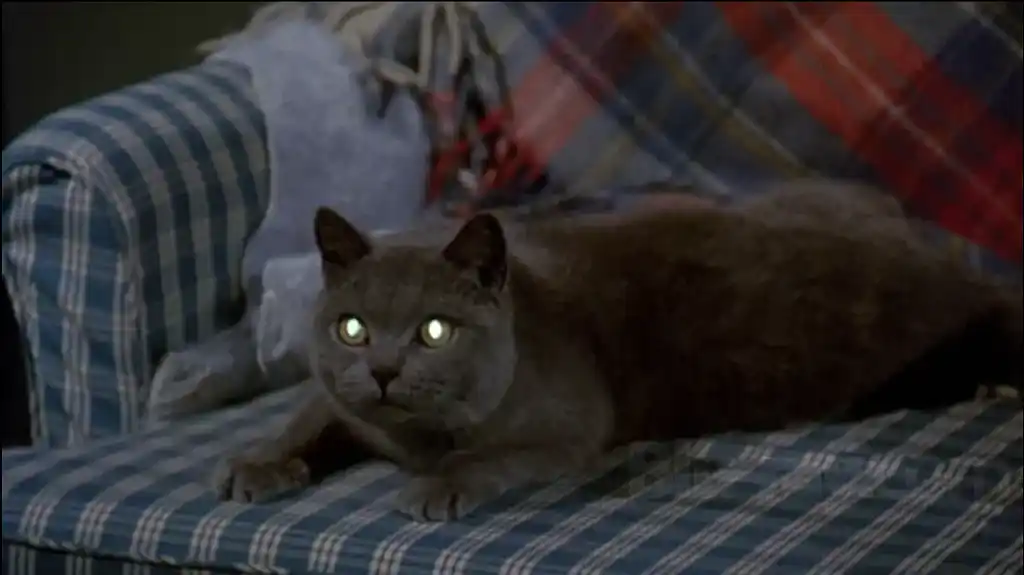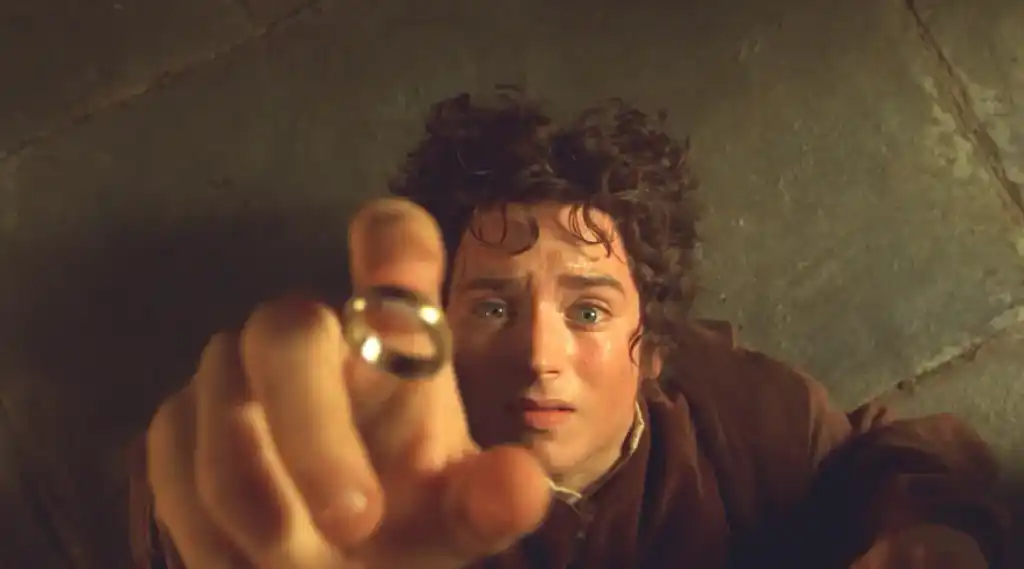Guides • Perfecting your Craft
Posted on Nov 04, 2024
Man vs. Supernatural: The Most Imaginative Conflict in Literature
Linnea Gradin
The editor-in-chief of the Reedsy Freelancer blog, Linnea is a writer and marketer with a degree from the University of Cambridge. Her focus is to provide aspiring editors and book designers with the resources to further their careers.
View profile →Dario Villirilli
Editor-in-Chief of the Reedsy blog, Dario is a graduate of Mälardalen University. As a freelance writer, he has written for many esteemed outlets aimed at writers. A traveler at heart, he can be found roaming the world and working from his laptop.
View profile →From Superman to Percy Jackson, many of our favorite literary heroes face seemingly impossible challenges, taking on mythical creatures or forces that cannot be explained by science or logic. This type of literary conflict is known as man vs. supernatural (or character vs. supernatural) and though the obstacles may be otherworldly, these are ultimately stories about our deepest hopes and fears.
In this post we’ll explore why this imaginative literary conflict is so popular and share some writing tips for when crafting your own man vs. supernatural tale. Let’s dive right in.
What is man vs. supernatural?
Particularly popular in the fantasy, sci-fi, and horror genres, man vs. supernatural is a type of external conflict that allows you to stretch your imagination and create fantastical worlds and otherworldly monsters that the protagonist has to face. Yet it often intertwines with internal struggles, pushing characters to confront their values and uncover their true nature, which adds depth and excitement to a fast-paced narrative.
From mutant spiders to zombies and demons, the threats are often a representation of someone’s deepest fears and ethical conundrums, giving insights into the heart of man. For example, a fear of not fitting in could become a tale about hiding one's vampire slaying day job to avoid potentially getting admitted to the insane asylum.
On top of that, because the antagonist possesses supernatural abilities, man vs. supernatural stories are also often stories about underdogs; a type of David vs. Goliath tale where the protagonist starts out weaker than their enemy and must go through a process of growth and development in order to defeat the antagonist.
What are some common themes in man vs. supernatural?
As hinted, though man vs. supernatural conflict contains otherworldly elements, ultimately, they often explore the ethical dilemmas and fears of the everyday man, just turned up a notch. Here are a few common themes that you might find being explored in man vs. supernatural conflict, explained with some practical examples:
- 👩🏻🔬 Faith vs. doubt: A scientist encounters an unexplainable phenomena which wreaks havoc in her town, forcing her to reassess everything she thought she knew.
- 👹 Fear of the unknown: A young boy is haunted by nightmares, fuelled by his fear of what is lurking beneath his bed, representing the unknown dangers of the adult world.
- 🧠 Hubris and power: A resentful office employee mysteriously gets the ability to read people’s minds and starts using it to work his way up the career ladder, but soon discovers the consequences of living off of unearned gains.
- 🧟 Redemption and sacrifice: An absent father must do whatever it takes to protect his family when a zombie apocalypse threatens everyone’s lives.
- 👵🏻 Mortality and immortality: A grieving widow must process the death of her husband as he comes back in the form of a ghost in order to set him — and herself — free.
Now, let’s look at a few real examples from pop culture to get an even better idea of how man vs. supernatural conflict works.
Examples of man vs. supernatural from literature
The Picture of Dorian Gray by Oscar Wilde
The Picture of Dorian Gray by Oscar Wilde is a classic gothic tale in which a vain and debauched Victorian gentleman sells his soul for eternal youth and beauty. In return, his recently painted portrait ages on the canvas, becoming a reflection of his inner self that he must hide from the world.

By bending the rules of nature and building a world in which it is possible to stop aging, the novel explores the consequences of vanity and greed, as the eponymous main character gets everything he asks for, yet grows increasingly unhappy and obsessed with his own image.
Desperate to keep people from finding out the truth about his portrait that keeps deteriorating and showing the true nature of his soul, Dorian embarks on a negative character arc in which he (and the reader) must wage an internal battle and question whether immortality and external beauty is truly something worth risking your morals and soul for.
Dracula by Bram Stoker
When Jonathan Harker makes a visit to Transylvania to help his client Count Dracula purchase a London house, he is warned by the locals that the Count may be a vampire. Ignoring the warnings, he goes through with the deal and finds Dracula to be a gracious host. But he soon suspects that he might be trapped in the castle and that his client possesses supernatural and diabolical abilities. At the same time, a ship with cargo from the castle is wrecked off the coast of England, coinciding with the occurrence of strange events in the town of Whitby.
As Harker unwittingly helps Dracula relocate to England and then tries to stop him from harassing the people of Whitby, the novel’s climax arrives when it is discovered that Dracula has turned a local woman, Lucy, into a vampire.

By turning the Count into something supernatural and inhumane, Stoker creates a gothic atmosphere befitting the horror genre, but also cashes in on contemporary fears of the foreign threat arriving on British shores. Dracula, a longtime threat to his fellow countrymen, becomes a monstrous apparition and direct threat to local women, British society, and Christianity itself.
Pet Sematary by Stephen King
Recently moved to rural Maine with his family, Dr. Louis Creed and his family’s idyllic life soon turns sinister as Louis is visited by the ghost of a patient who died on his watch. The patient brings a warning regarding the pet cemetery in town but Louis is a man of science and medicine and writes it off as a nightmare or hallucination.
But when the family cat Church dies while the rest of the family is away for Thanksgiving, Louis frets about how to break the news to his daughter Ellie, who was particularly fond of the cat, and is advised to bury Church in the cemetery by his neighbor Jud. Jud reveals that it is placed on ancient indigenous Mi’kmaq burial grounds. Before the rest of the family can return, Church appears back in the house, acting and smelling strange.

Spooked by the return of Church, Louis tries to ignore his misgivings, but his daughter Ellie can tell that something is amiss. Speaking to his neighbor Jud, Louis learns that Church has indeed been resurrected just like Jud’s childhood dog was when Jud was younger.
Months later, tragedy strikes and Louis’s young son Gage dies in an accident. Desperate with grief, Louis takes him to the burial grounds in hopes of getting him back, in whatever shape it might be…
While exploring themes of grief and mortality, the addition of the supernatural elements in Pet Sematary not only allows Stephen King to slowly build the tension and raise the stakes of the story, but also to add a layer of psychological horror. The readers must ask themselves whether going against the cycle of life and death is worth it, if it means that your loved ones are only there in physical form, not spirit. As Louis Creed goes through a journey of denial, it makes for a poignant lesson on the dangers of messing with the natural order of things, and what really happens to the soul after death.
Examples from film and TV
The Lord of the Rings (2001)
The Lord of the Rings is an epic film suite based on J.R.R. Tolkien’s classic books, following a hobbit named Frodo, who inherits a ring that the wizard Gandalf suspects is the Ring of Power — a ring with the ability to rule all — belonging to the Dark Lord Sauron. As Sauron scours the realm for the ring, Frodo must journey across Middle Earth to destroy it to stop anyone from ever abusing its power again, all while avoiding the shadow of the Dark Lord looming over him.
An unlikely hero, Frodo is at first unwilling to take on the quest, but must shoulder his responsibility and set out on this classic hero’s journey in order to keep himself and his loved ones safe.

Set in a fantasy world where supernatural creatures roam free, as Frodo ventures out to destroy the Ring of Power to stop Lord Sauron from abusing its abilities, he and his companion Samwise, along with a fellowship of heroes, face dangers at every turn, coming up against evil forces out for selfish gains. But the force of the ring is potent, and no one who has it in their possession is immune to the pull of unlimited power, not even Frodo, who must struggle to resist falling for the temptation and turning over to the dark side.
Everything Everywhere All at Once (2022)
When a rupture in time and space starts to disintegrate reality, Evelyn Wang, a middle-aged Chinese immigrant and laundromat owner, already overwhelmed by the demands of life — from filing taxes to keeping her business afloat while saving her strained relationship with her daughter — must learn to access alternative versions of herself in the multiverse in order to save the world and her family.

At its core, Everything Everywhere All at Once is a story about “what ifs,” the immigrant experience, and life’s inherent messiness. With the added supernatural elements, an already overwhelming world becomes even more overwhelming as Evelyn must go on an inner journey by facing all the missed opportunities and versions of herself that she could have been if she had chosen different paths.
Each reality that she encounters represents an unrealised potential or suppressed desire which she must acknowledge in order to save the world. By doing so, she is also able to better understand her family, ultimately finding strength in who she is and maybe also the meaning of life.
Buffy the Vampire Slayer (1997 – 2003)
Destined to slay vampires, demons, and other infernal creatures, Buffy Summers just wants to live like a normal teenager. But the underworld has other plans for her, constantly pulling her and her friends into gnarly situations where she must use her brains and brawn to defeat evil.

This cult classic about a teenage girl just wanting to fit in throws vampires, demons, and ghouls into the mix, literally turning normal trials of adolescence into life and death situations. Of course, while this makes for a thrilling viewing experience, it also quickly forces Buffy to grow as a character and accept her role as the Slayer, while bonding with her friends by showing them who she truly is and relying on them for support.
Let’s now look at a couple of tips to include this conflict in your writing…
3 tips for writing man vs. supernatural conflict
1. Start by figuring out the worldbuilding
The possibilities are endless when it comes to crafting man vs. supernatural conflict; since these conflicts go beyond the bounds of nature and reality, only your own imagination can stop you from conjuring up new and fantastical beasts for your protagonists to defeat. But in order to create a force that your main character has to go up against, you first have to figure out the logic of the world the story is set in and, by extension, the science or magic that lies behind the antagonist’s power.
Take Lord of the Rings, for instance. To establish the main conflict between Frodo and Lord Sauron, Tolkien had to create a whole new world inhabited by magical and mythical creatures, complete with its very own language and a magic system that explains how the Ring works — the object that disrupts status quo and sparks the conflict in the first place. Tolkien even drew up a fantasy map to illustrate the journey that Frodo has to go on.
Your worldbuilding doesn’t have to be as meticulous as Tolkien’s, but unless you want to end up with plot holes the size of Krypton, you need to have an idea of what supernatural force is fuelling the antagonist in the conflict. Then, you can reveal as much or as little as you want (sometimes, the best tension is created when there’s an element of the unknown, after all) to the reader, letting them discover what is going on together with the protagonist.

FREE RESOURCE
The Ultimate Worldbuilding Template
130 questions to help create a world readers want to visit again and again.
2. Figure out your character arc
Though a supernatural force might sound thrilling on its own, your conflict is likely to fall flat unless you also incite some character development that allows you to explore a central theme. So, once you have an idea of the logic of your fictional world, you can start thinking about what type of character arc you want your main character(s) to go through — the transformation they will experience throughout the story.
Essentially, the character arc will consist of three main components: the character has a goal (their motivation) that they are trying to achieve, but they are stopped by an external obstacle (a lie about themselves or a supernatural being that stops them from achieving their goal), and must go through a process of transformation and self-discovery in order to embrace the lesson they needed to learn (the truth) and defeat their enemy.
In The Picture of Dorian Gray, for instance, we follow the main character Dorian as he goes through a negative character arc: Dorian’s goal is essentially to live a happy and carefree life (the goal), but the fear of losing his youth and beauty threatens to ruin it all for him. He thinks eternal beauty and immortality will ensure that he can achieve his goal (the lie), but as he faces his decaying portrait and becomes increasingly unhappy, he struggles to accept the truth and goes into a downward spiral, becoming a worse person than when he started. Whether he discovers what real happiness means (the truth) or not is up for the reader to interpret.
3. Use the supernatural to explore human nature
Lastly, as we already mentioned earlier, one reason why man vs. supernatural conflict has been so popular throughout the history of storytelling is not simply because it is so imaginative, but because it helps authors reveal some hidden truths about the real world and real people.
The beauty of literature is that authors can create impossible scenarios and tell old tales in new ways in order to push their characters to their limits and explore what people are capable of when facing their deepest, darkest fears or, on the flipside, what happens when they are magically given everything they thought they wanted.
Sticking with the example of Dorian Gray, we learn that sometimes our unhappiness is not rooted in not achieving our goals, but in the fact that we don’t actually know what truly makes us happy and chasing the wrong thing. Likewise, in Pet Sematary, we see that sometimes people are capable of committing the most deranged acts when in the midst of despair, thinking it will relieve their suffering, but instead only worsening their pain. So, while your character might go up against an external, supernatural force, it turns out that they are almost as often their own worst enemies in a battle against themselves.
When it comes to man vs. supernatural in literature, only your own imagination can put a stop to what your characters go through. Much of what makes man vs. supernatural stories so compelling is ultimately what they can tell us about human nature, so if you’re stuck for ideas, use the external threat that your character is facing to explore some of the struggles that we all face, with or without supernatural intervention. And if you’re ready to start writing, head over to Reedsy studio.


